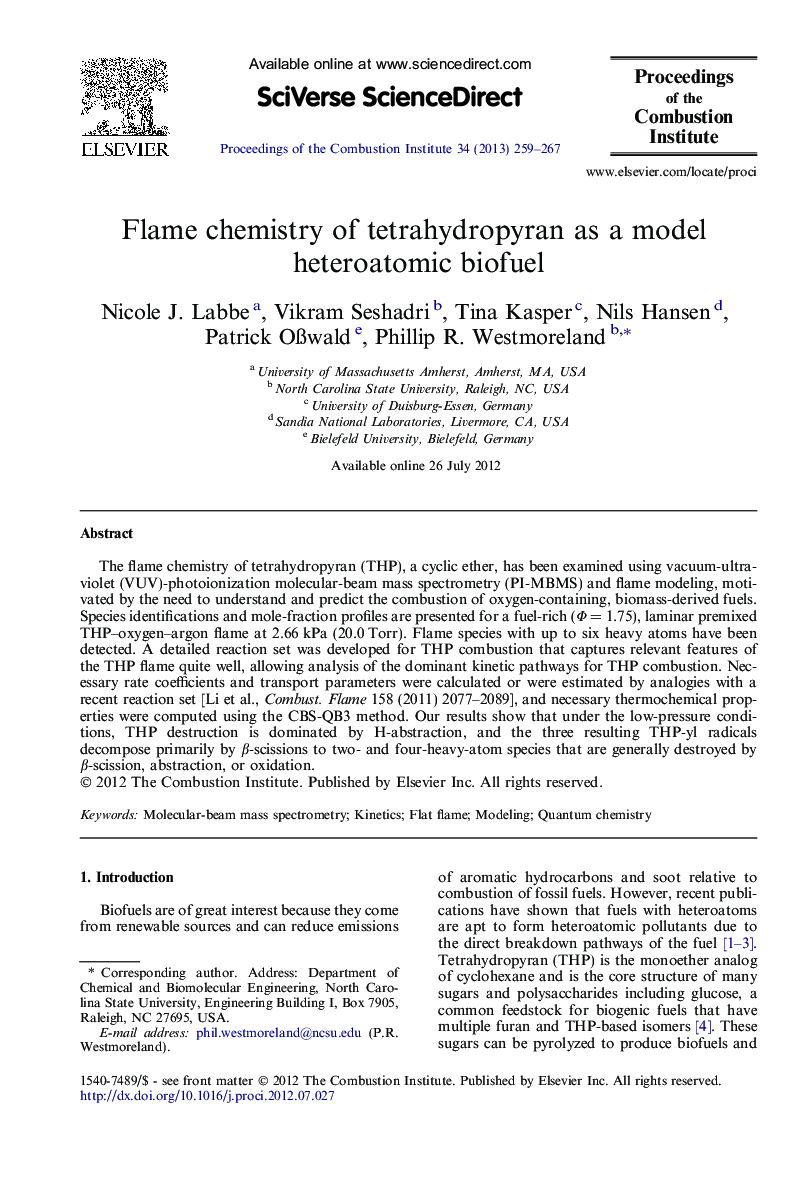| Article ID | Journal | Published Year | Pages | File Type |
|---|---|---|---|---|
| 241124 | Proceedings of the Combustion Institute | 2013 | 9 Pages |
The flame chemistry of tetrahydropyran (THP), a cyclic ether, has been examined using vacuum-ultraviolet (VUV)-photoionization molecular-beam mass spectrometry (PI-MBMS) and flame modeling, motivated by the need to understand and predict the combustion of oxygen-containing, biomass-derived fuels. Species identifications and mole-fraction profiles are presented for a fuel-rich (Φ = 1.75), laminar premixed THP–oxygen–argon flame at 2.66 kPa (20.0 Torr). Flame species with up to six heavy atoms have been detected. A detailed reaction set was developed for THP combustion that captures relevant features of the THP flame quite well, allowing analysis of the dominant kinetic pathways for THP combustion. Necessary rate coefficients and transport parameters were calculated or were estimated by analogies with a recent reaction set [Li et al., Combust. Flame 158 (2011) 2077–2089], and necessary thermochemical properties were computed using the CBS-QB3 method. Our results show that under the low-pressure conditions, THP destruction is dominated by H-abstraction, and the three resulting THP-yl radicals decompose primarily by β-scissions to two- and four-heavy-atom species that are generally destroyed by β-scission, abstraction, or oxidation.
